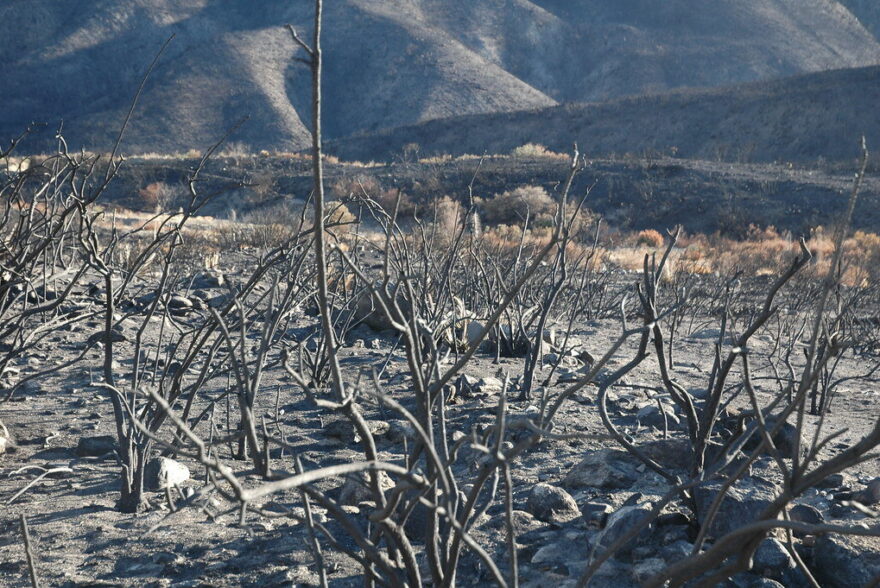The 2020 fires are out at last — what happens now?


Each year, when fire season ends – though it is increasingly a question in California if it does at all – a host of other problems spring up for communities in and around affected areas.
Written by: Tessa Maurer
The 2020 fire season may have felt like a bomb going off when unprecedented fires broke out, first in California on Labor Day weekend, then up and down the West Coast and in Colorado. Over the next few months, more than 8.2 million acres burned. Tens of thousands of people were evacuated and dozens died. Poor air quality extended from Canada to Mexico for weeks, impacting tens of millions. But the season that started so explosively ended with a whimper, swallowed up in the surging pandemic and election disputes. December fires in Southern California triggered evacuations in Riverside and Orange Counties, but were contained at a relatively modest 10,000 total acres. Now, in the first days of 2021, as the world ignites in other ways, even this extraordinary fire season may already feel distant. The danger isn’t over, however, only shifted to new concerns. What can communities expect now?
Each year, when fire season ends – though it is increasingly a question in California if it does at all – a host of other problems spring up for communities in and around affected areas. Mudslides and debris flows are particularly acute and dangerous threats after a fire. These fast-moving disasters are triggered when water flow over the ground is fast enough to wash away the top layers of soil, taking with it rocks, trees, and other debris. Post-fire there is usually less vegetation to hold soil in place and allow rain time to infiltrate rather than quickly running off. Moreover, burned soil and ash can repel water compared to unburned soils, causing more rainwater to runoff more quickly than it would otherwise. Since intense rainfall, especially fromatmospheric rivers, is a regular occurrence during California, Oregon, and Washington’s wet seasons, mudslides on burn scars pose a significant threat.
Degraded water quality is another major issue. Even if mudslides do not occur, denuded landscapes are more vulnerable to erosion, which increases nutrients (nitrogen and phosphorus) and sediment load in nearby waterways. This can threaten aquatic species and make water treatment for human use more difficult. Dissolved organic carbon from burnt plant matter is particularly tricky to handle, since it can form carcinogenic compounds if it comes in contact with chlorine, which is commonly used to purify human drinking water. As fires increasingly encroach and burn urban areas, toxic chemicals have been found in water distribution systems, even if the source water is spared. The exact sources of these chemicals are still unknown, but may be related to combustible plastics within the water systems themselves or from household goods and materials. However, water quality threats are not always localized problems: since most major metropolitan areas in California import their drinking water from far-away headwaters that are vulnerable to catastrophic wildfire, water quality problems can be felt across the state. Drinking water source catchments from the Feather River (source water for Los Angeles and San Diego) to the American (Sacramento) to the Tuolumne (San Francisco and South Bay) all experienced major fires this season.
As with any natural disaster, post-fire dangers are enmeshed in equity issues as well. The rural communities that are more likely to be directly impacted by catastrophic wildfire and subsequent issues are typically lower income and, like the town of Paradise destroyed in the 2019 Camp Fire, may be home to a higher proportion of retired, elderly, and disabled residents. This places the post-fire risks disproportionately on communities that were already more vulnerable, even discounting the impacts of the fire itself. Wealthy areas like Montecito, which experienced a mudslide in 2018 that wiped out 100 homes, have been able to raise funds for recovery and future protection measures, while poorer communities, without aid from the state or federal governments, must live with the risk.
However, despite the dangers of the post-fire period, this is also a moment of opportunity for communities, organizations, and governments that are serious about breaking the cycle of catastrophic fires. The ecological changes post-fire can set the stage for the next major fire or be guided towards a more resilient future. Managed restoration can ensure that plant regrowth consists of a diversity of fire-resilient native species, instead of homogeneous shrubs and grasses cover and invasive species, which may be more vulnerable to future fires. If we take away anything from the 2020 wildfire season, it’s that suppression is no longer a sustainable approach. We must turn our efforts quickly and immediately to protecting communities in the short- and long-term. Blue Forest’s work in developing projects through the use of the Forest Resilience Bond can speed the kind of recovery we need to prevent future wildfires — and all the subsequent challenges they entail.